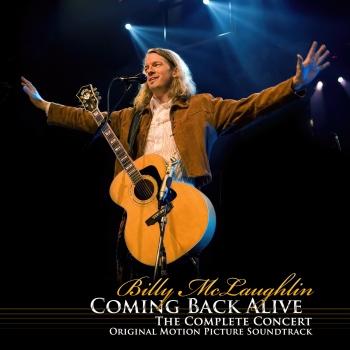Billy McLaughlin
Biography Billy McLaughlin
Billy McLaughlin
has been changing people’s idea of what an acoustic guitar can sound like since the 1980’s.
He is recognized as an innovative performer and composer who embraces the advantages of acoustic guitar amplification, unorthodox techniques and altered tunings while celebrating a gift for melody. His enormous yet fluid acoustic guitar tone has carried him around the world, to Billboard’s Top-Ten Chart and most recently through a devastating medical disorder called focal dystonia. McLaughlin has had to re-learn the guitar left-handed and is in the early stages of what might be described as ‘one of the great musical-comeback stories of all time.” His story is the subject of an award-winning documentary film called Changing Keys – Billy McLaughlin and the Mysteries of Dystonia.
A serious professional in his teens, McLaughlin left his home and rock band in Minneapolis for the University of Southern California guitar department where he became interested in minimalist composers Phillip Glass and Steve Reich. Employing what would become his signature style of placing both hands on the fretboard, McLaughlin began composing for his first release using a technique of ‘hammer-ons” and ‘pull-offs” that create a harp-like effect on the acoustic guitar. This unusual approach led Billy to extensive national touring earning multiple NACA Campus Entertainer awards. In 1995 McLaughlin signed a multi-album international contract with Virgin Records label Narada whose first release, Fingerdance, peaked at #7 on the Billboard charts. Hundreds of shows a year and another release deep into the contract with Narada, he began struggling with his hands – something felt ‘off” and it was getting worse.
For two years he struggled with a mysterious and unrelenting condition of unexplainable muscle spasms and contractions. Shockingly as symptoms grew worse he could no longer perform most of his own repertoire. In 2001, Billy was diagnosed with a neuromuscular disorder called focal dystonia. The diagnosis was confirmed at the Mayo Clinic. Going against doctors’ recommendations to quit music and look for other work, McLaughlin focused on his songwriting and returned to his rock band which was less demanding for his hands. Despite releasing his ensemble’s best recording, Finally – Live! (2002) it was clear that focal dystonia had ended McLaughlin’s career as a virtuoso guitarist.










